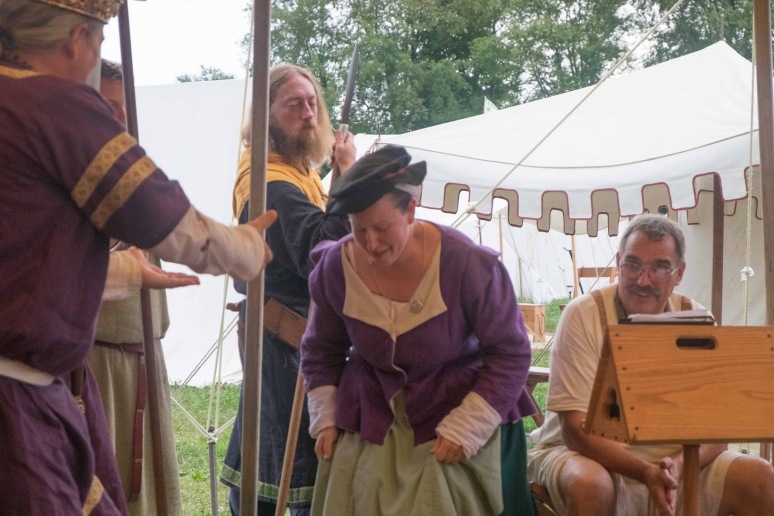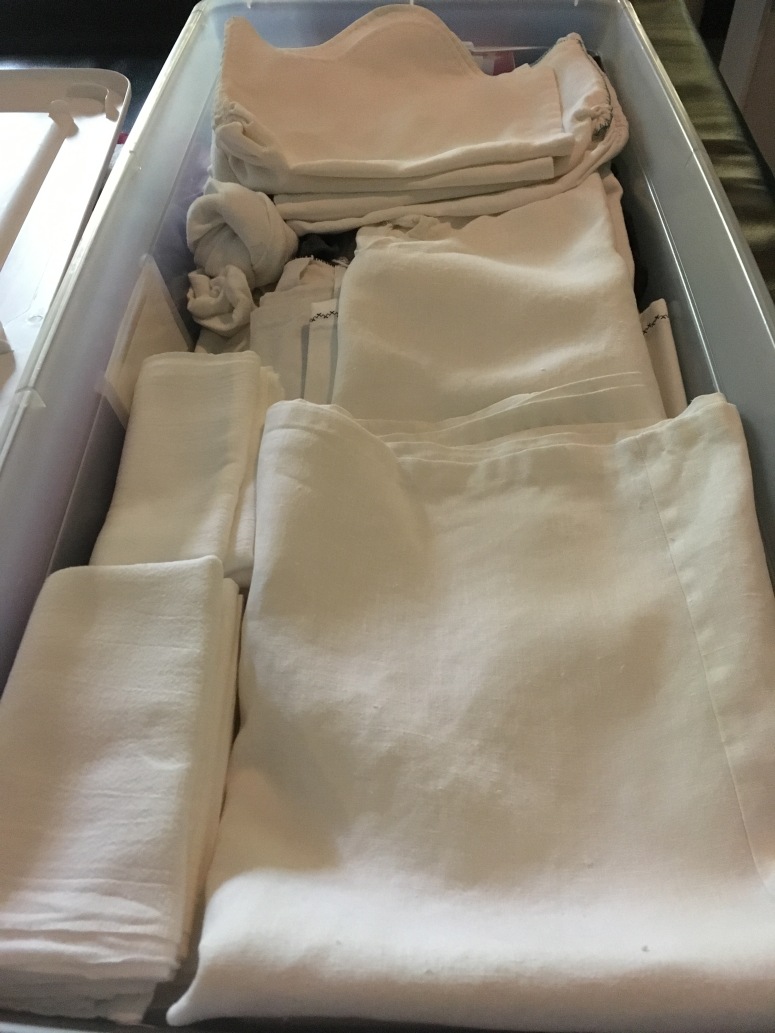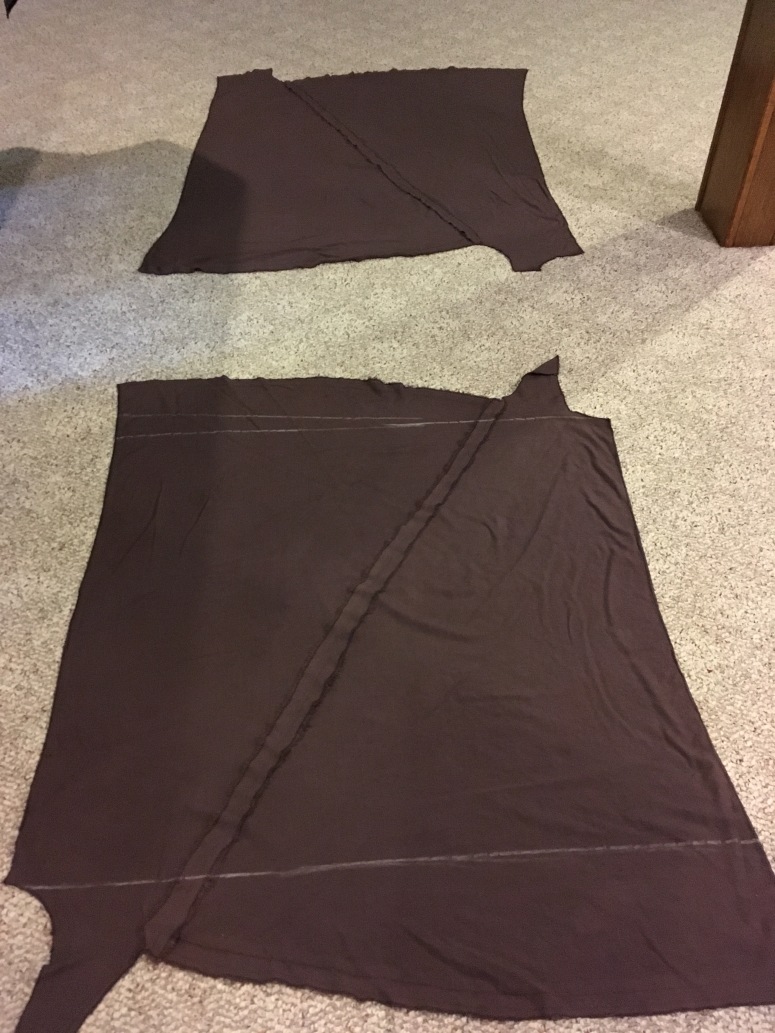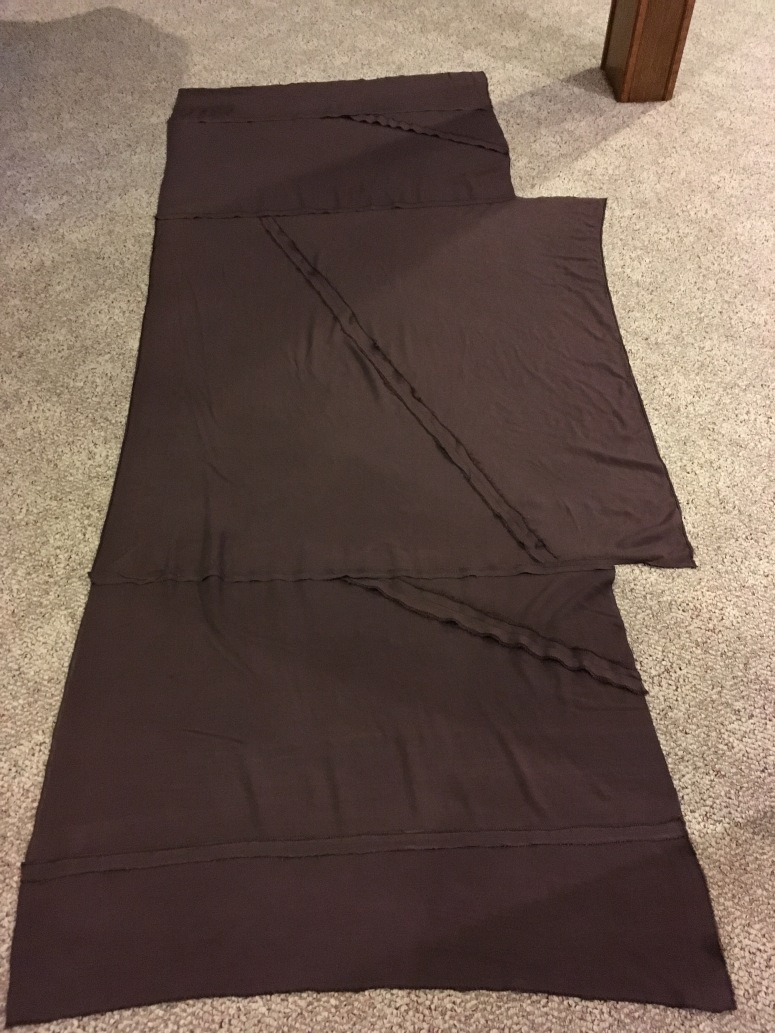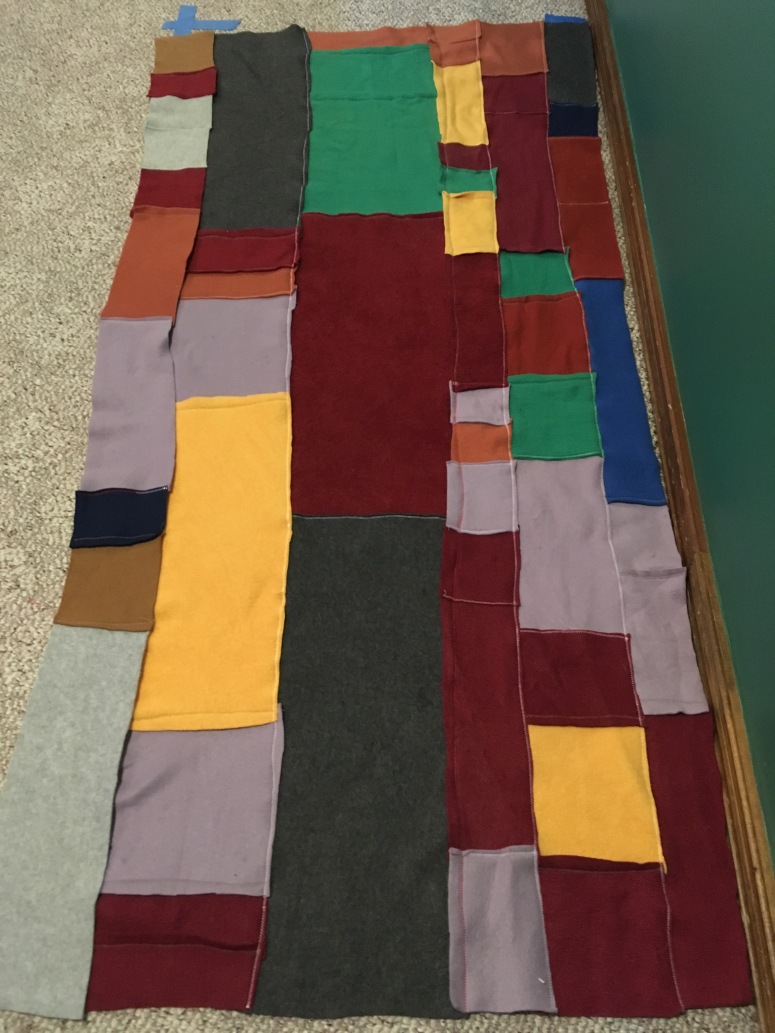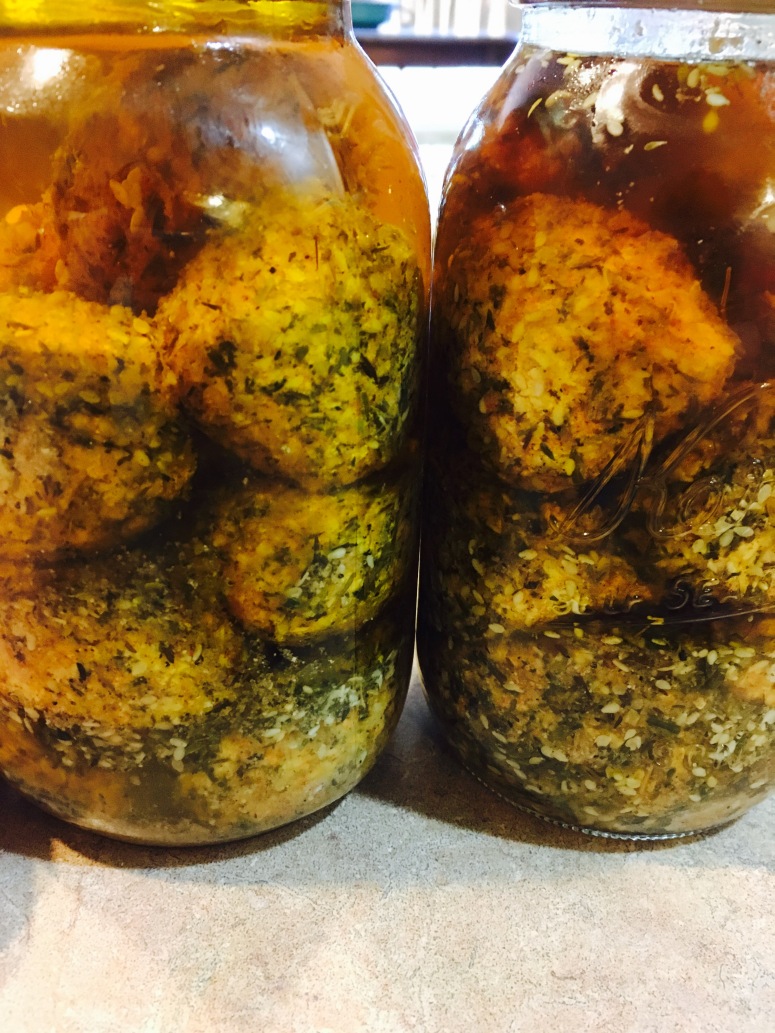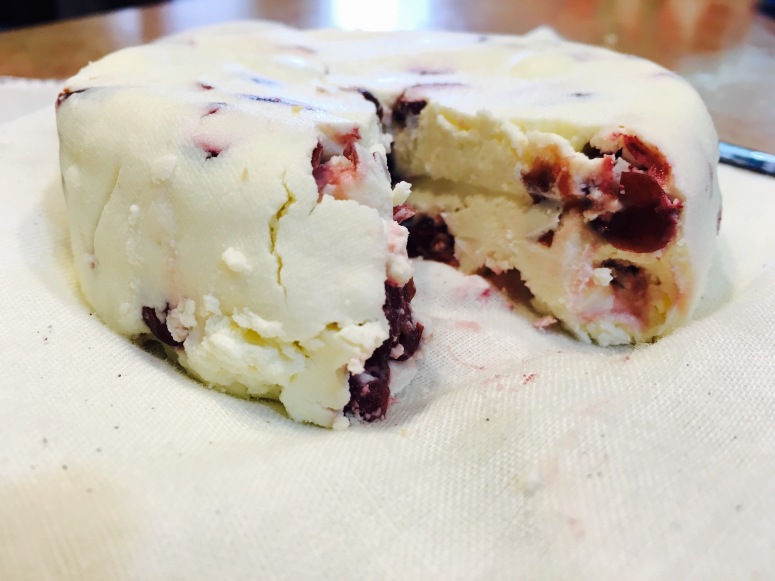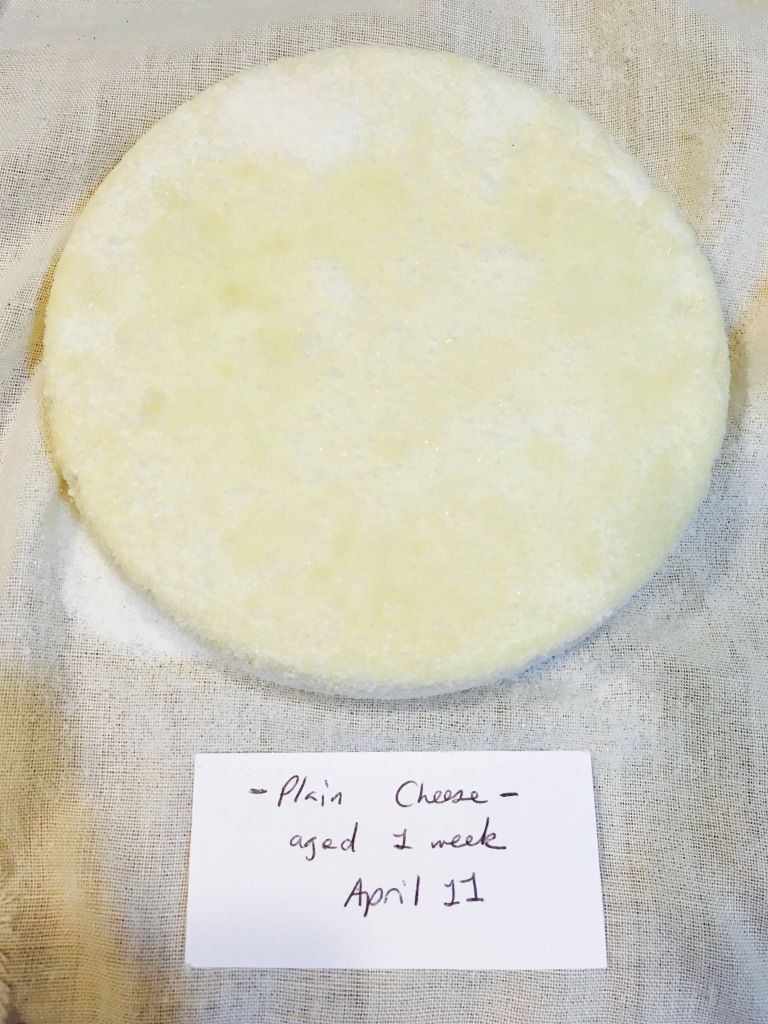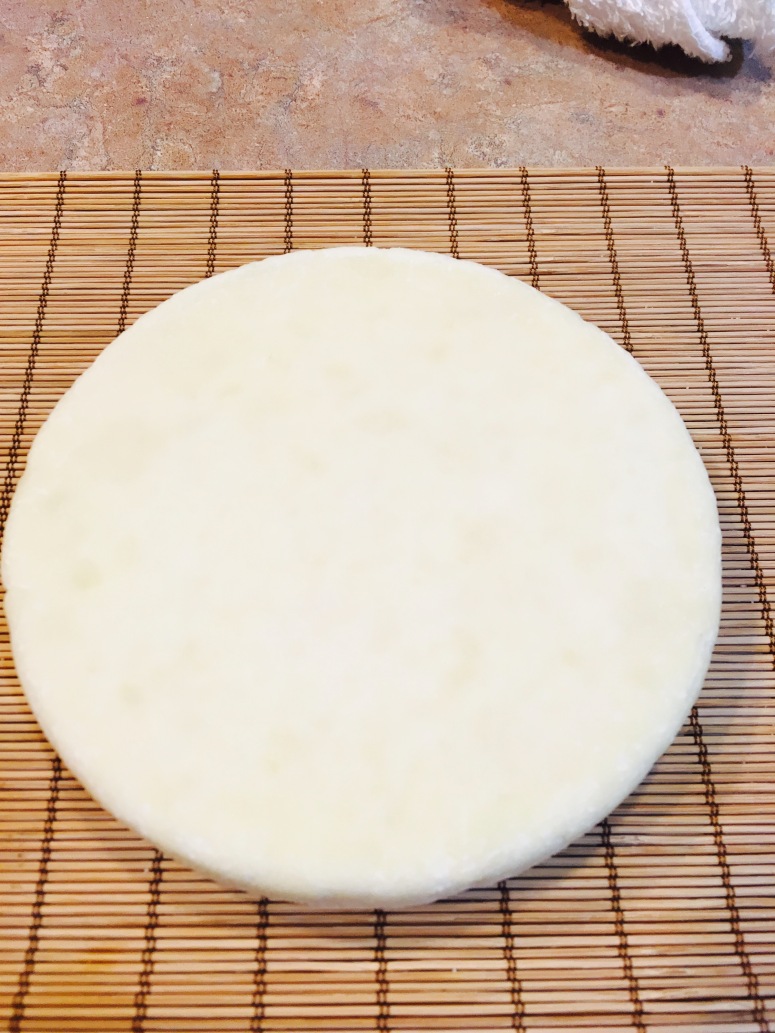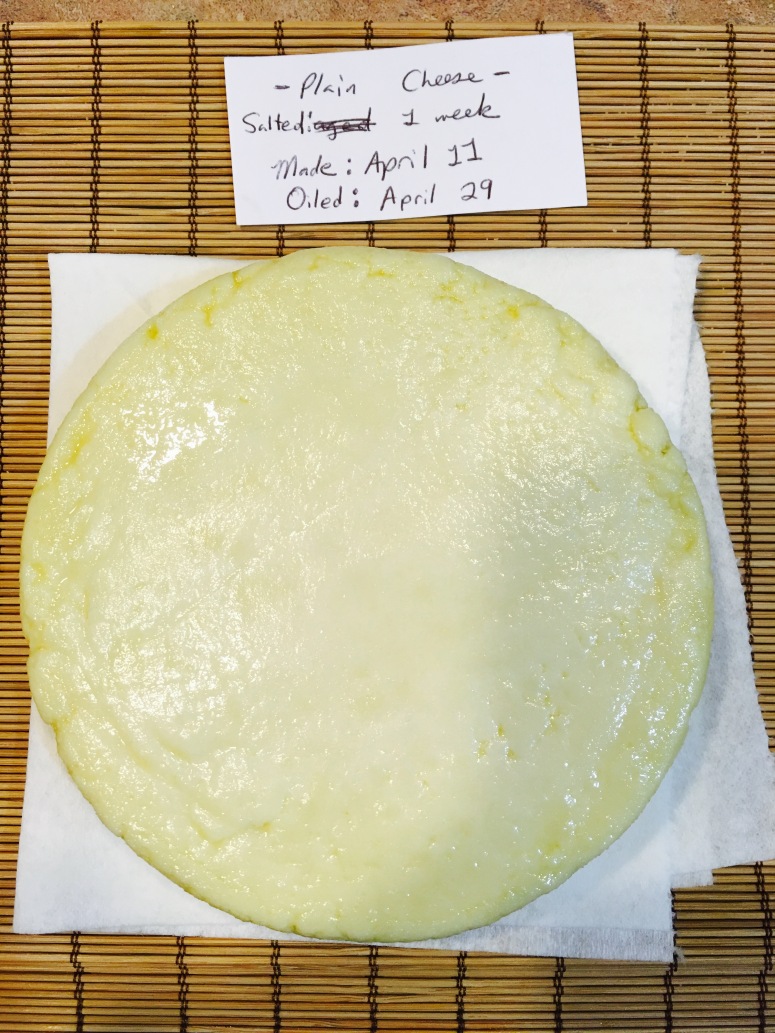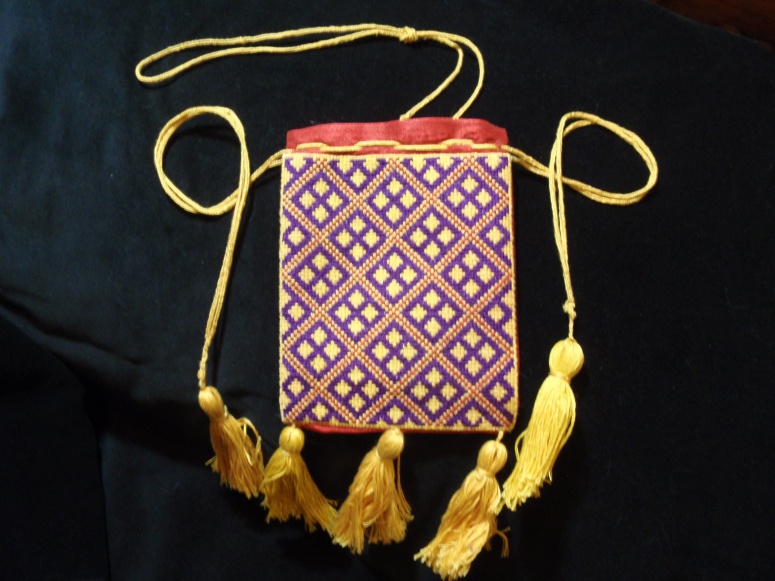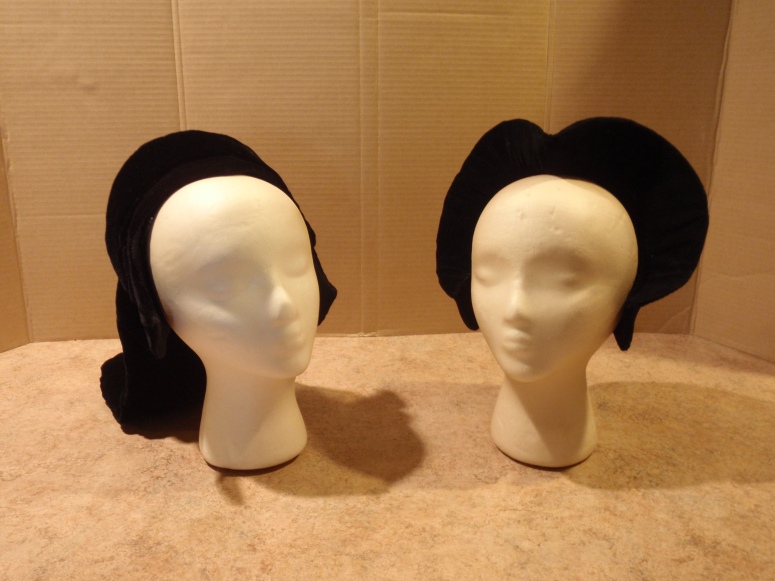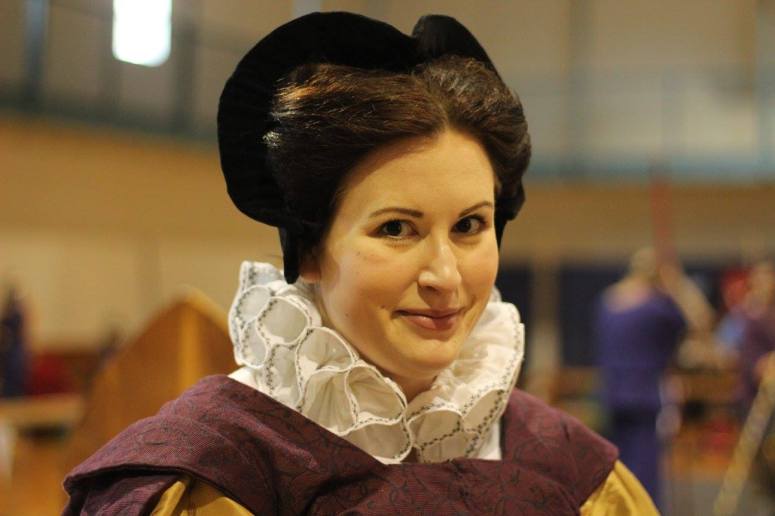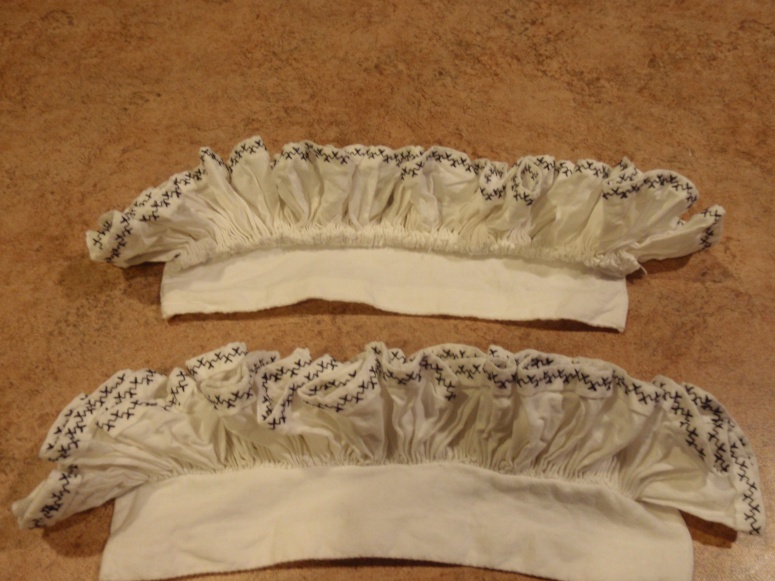Below is the write up for the Hygiene and Cosmetics Class that I taught at Lilies War 30.
Hygiene and Cosmetics in the 16th Century
Getting Clean:
In the Early Modern Period there was still a pervasive idea that disease and bad humors entered the body though open pores of the skin as well as through the nose through smells (I’ll get to that in a minute.) We see this in various sources, one of which being the 1545 book by Thomas Moulton, “This is the Myrrour or Glasse of Health”, where he counseled people to not fully submerse themselves in water or bathe (as we do today) due to the risk presented by opening up your pores and thus body to infection. We also see this idea as the rational behind closing the public baths in London mid-century. You might be asking yourself, if people were so against bathing, why were there public baths? Well, people did in fact still bathe; however, public baths were seen as centers for the worst sorts of 16th century society: sick, poor, and physically diseased who sought out the baths to 1) get clean and 2) perceived possible therapeutic properties. This hot and wet environment with ill people in a constricted environment did breed more illness, but not through bad vapors as believed in period. Public baths were also often gateways for obtaining prostitutes, which introduced another disease vector into the public bath perception.
Men, usually laborers or agricultural workers, sometimes bathed in a pond or creek to get the worst of the grime off. For the more refined an occasional steam bath of herbal waters would be used as a medical cure, but not as a tool for everyday hygiene. Sensible people continued to shun bathing as we know it, and were cautioned to only wash their faces, hands, and feet in cool, clean, or perfumed water. The body was cleaned with a dry linen cloth rubbed on the skin to remove surface dirt, dead skin cells, and “toxins”. This strikes me as almost a period equivalent of modern day dry brushing. Both methods are used to try to slough off dead skin and cleanse the body of perceived toxins.
Most people with long hair balk at the idea that hair was not washed on a regular basis in period, however the Early Modern Person had several other tools to keep their hair clean and free from vermin. Looking at shipping records from London in 1567, at least 90 thousand (yes, thousand) combs of various cost and quality entered the port in a given year. This points to the ubiquitous use of combs through most levels of society, maybe only the beggar poor could not afford a half-penny comb. These combs were often two sided, one side had wide teeth for large tangles and the other side had fine teeth like a flea comb you would use on your pets. Only the 16th century person wasn’t using these combs exclusively on their pets, they were using them on theirselves to remove fleas, lice, dead skin cells from the scalp, and move beneficial natural oils from the scalp to the ends of the hair to keep it soft and moisturized. We also see references to hair powders, rinses, and perfumes. In an experiment at Lilies 2015, Mistress Aline Swynbrook and I used the hair powder recipe from Trotula and enjoyed the smell throughout the war (while originally a 12th century text, it was published in written Latin editions popularly through the 14th and 15th century and then in a printed edition in 1544). Such hair powders can be seen as part medieval dry shampoo, part perfume. I also made an herbal water to use for washing and hair rinsing; it was met with mediocre success, however if properly prepared using the herbal water distillation method I feel like it could have gone better.
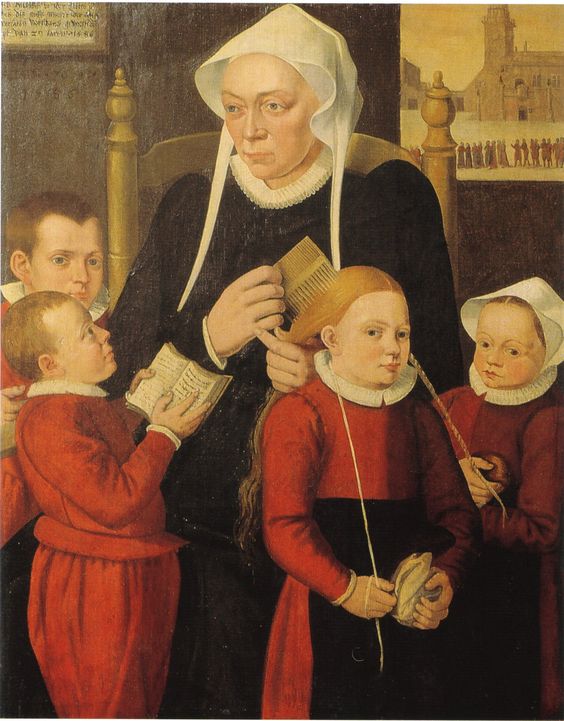
“Hilleke de Roy and Four of Her Orphans”, Anonymous, 1586. Showing the double sided combs and act of combing hair.
Tooth care was also an important part of everyday hygiene. It included everything from simply picking one’s teeth and rinsing the mouth with water, to using expensive clove powders or distilled Imperial Water made with wine, ginger, nutmeg, and a host of other herbs and spices to cure stinking breath according to Gervase Markham in “The English Housewife”. Most people generally fell somewhere between the two and used a small cloth to polish their teeth and physically remove any offending items. Candle soot, chalk, salt, and rosemary wood ashes all were used as physical cleaners and deodorizers. Barber surgeons could be utilized to remove teeth that became rotten. If you are looking for a modern equivalent of medieval tooth paste, Toms has a toothpaste in a cinnamon clove flavor that is quite lovely.

The Barber Surgeon’s Chest from the Mary Rose. Containing various ceramic jugs thought to contain wine for disinfecting wounds as well as smaller apothecary jars for medicinal uses or to hold his tools.
Staying Clean:
In the eyes of the Early Modern Person the steps one took to stay clean were just as important as getting clean in the first place. Earlier I mentioned that illness could enter the body through both the pores of the skin as well as the nose through foul smells. The notion that clean and sweet smelling air could prevent illness was an important part of most people’s understanding of hygiene. If you smelled sweet and clean, then you were clean. That is one reason why we have so many recipes for distilled herbal waters, perfumed oils, and perfumed soaps.
Starting from the skin out, herbs like lavender, rue, wormwood, ladies bed straw, and other sweet or bitter herbs would have been put inside of or laid between the mattress of your bed. This would have attempted to keep your sleeping environment smelling clean and bug free. Next, ideally, each day you would wear a fresh linen shirt or smock next to your skin after you washed for the day. The linen would serve to absorb sweat and dirt throughout the day, keeping the environmental toxins from seeping into your pores. After its wear, the linen smock would be laundered in a lye solution, beaten in fresh water, and then laid out to dry in the sun to bleach. The clothes that you put on would have been hung to air out after the last wear, or would have been stored in a chest with more sweet smelling herbs. Either perfumes would have been applied or pomanders worn by both sexes to keep the evil vapors at bay. Pomanders could be as simple as herbs worked into a bit of wax, or very elaborate affairs made with exotic spices, scented oils, and musk. Men wore pomanders around their necks, while women wore suspended from their waists.

A silver plated pomander from Germany, ca. 1486-1500. Only a wealthy person would have used a pomander such as this.
Hair would have been kept contained and away from the skin of the face or neck – places where it would pick up dirt and excess oil. Men would have kept the same care with their hair as women did, although coifs had fallen out of favor with men as the century progressed. A man’s place in society could instantly be recognized how he dressed and kept himself, so he would naturally attempt to look his best. Women generally kept their hair covered with various linen coifs or headrails. This would not only have protected their hats or hoods from the oil of their hair, but also would have absorbed any excess oil as well as kept unwanted environmental pollutants (such as chaff from domestic grain preparation) out of the hair.
Tools of Hygiene:
While all over bathing wasn’t a part of everyday life, people still used soap. Soap in it’s most basic form is a combination of lye, a strong alkaline solution made from straining water poured through wood ash, and fat that has been rendered to remove any impurities. The two substances are heated together, stirred until saponification starts to happen, and then poured into some sort of mould to cool. The soap usually must cure and harden before use. Some of this soap was lovely and was made by artisans who used properly devised proportions to get a soap with a rich lather and easy on the skin. Some of the finest soap coming out of Castile was made with olive oil, needless to say it has had lasting popularity. Some soap was not so lovely. Some soap makers were like my great grand mother and made highly alkaline soap that included a sizable amount of ash grit from a less than stellar straining of the wood ash. If you could not afford the best soap, you had other options. There were many ways in which to improve the soap you had, as purported by the writers of various Renaissance cosmetic recipe books. One out of Giovanventura Rosetti’s “Notandissimi secreti de l’arte profumatoria” or “Remarkable Secrets of the Art of Perfumery”, provided a recipe involving soaking the soap in rosewater for two weeks and then grounding it with expensive spices and oils to remove the foul smell of the soap. A person not as affluent could combine simple herbs, cheaper spices, and dried flower petals with their soap to make a more appealing product. Soap either sold in bars or balls could have been made at home by housewives who followed the recipes found in the prescriptive literature of the time or sold as a cottage industry. One of the woodcuts from Samuel Pepys’ “Cries of London” series, features a woman advertising her basket of washing balls crying “Buy by fine wash balls”. Recipes for these washing balls can be found in easily available literature such as Gervase Markham’s “The English Housewife”, as well as Hannah Wolley’s “Queen-like Closet or Rich Cabinet”, the latter downloadable for free with the Kindle app. Many other recipe and prescriptive literature books abound.

Perfumes in their many incarnations were seen as vital to good health. Scented oils were a luxury and throughout most of the period were generally only available through import from Spain. Later in the 16th century more options open up, as well as a surge in domestic production. These scented oils were most similar to our essential oils today. They were made by very gently distilling a highly infused herbal water and either catching just the oil in the distilled liquid, or distilling enough of the herbal solution to have a sizable oil float that could be poured off. Needless to say, it was a specialized craft. The expense of perfume oils matched the immense amount of resources needed to make them as well as the expertise of the distiller. Distilled herbal waters were cheaper, but not as potent. Like the soap recipes, such for the scented waters could be found in many books by the end of the period as well. Different scents had a special place in late period society as well. Lavender was generally accepted as a scent conducive to sleep, rosemary for memory, marjoram and rose were popular perfumes, whereas frankincense and other heady incense type scents were reserved for religious needs and had a strong connection with Catholic Mass.
Cosmetics:
The look of the 16th century, especially for the elite, was all about fair skin. It symbolized freshness, youth, as well as reinforced that the socioeconomic ability to stay out of the sun made a woman attractive. Unfortunately, the majority of ways that women attempted to achieve the alabaster complection were highly toxic. Lead oxidized in vinegar then crushed into a powder, called ceruse, was applied to the face, neck, and hands. Sometimes artificial veins would be drawn on to simulate translucent skin. The harmful effects of ceruse were not unknown, however some still chose to use the toxic products. Even the products that were formulated lead free, still contained caustic alum and tin ash (used by potters to make white glaze). The safest way for the modern reenactor to achieve that most sought after pallor is to wear sunscreen, find a foundation that is lighter than your skin tone, and use a pale powder. Seriously, wear sunscreen! I recommend a natural SPF physical block such as zinc oxide and/or titanium dioxide. Cera Ve makes a nice SPF 50 that works well for sensitive skin. Chemical SPF’s like Avobenzone, Octsalate, Octocrylene, Homosalate, and Oxybenzone will oxidize in the wash (and even sometimes with your own sweat while wearing) and turn your beautiful white linen shirts/smocks yellow and orange where the sunscreen had contact with the white linen. The stains are a bear to try to get out, so I recommend going with a mineral based physical block to begin with. Also, another perk of using a physical SPF is that you can get a bit of a pale look even with just the sunscreen! If you are looking for more coverage, a BB cream lighter than your current complexion will give you a bit of a lighter look without looking overly done up. If you are going for a full on Elizabeth I look, then I recommend a very light full coverage foundation with a heavy powder of the zinc oxide on top.
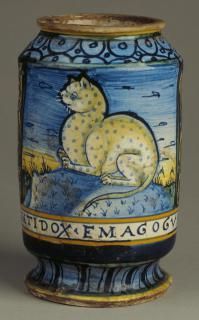
A Drug jar or albarello decorated with a spotted cat c. 1550 Italy. Cosmetics or perfumes could have also been sold in such apothecary jars.

A plainer apothecary jar from the Netherlands, 1550-1600.
To complete the 16th century ideal look, light colored eyes, fair hair, coral red lips, and flushed cheeks were a staple pretty much through the period. Within an English context, the idea could be exemplified through such famed beauties as Elizabeth Woodville and her daughter Elizabeth of York, Mary Tudor (sister of Henry VIII), Jane Seymour, Elizabeth I, and Lettice Knolly. While women who were not born with naturally fair hair could lighten it, it didn’t come without risks. Hair lighteners and dyes were toxic and could be highly caustic, much like the cosmetics, the safest being honey or lemon juice and sunlight that was most available to women in the Mediterranean regions such as Southern France and Italy. A strong solution of lye or urine (most likely approaching the ammonia stage) could have been used for bleaching as well. While there was nothing that could change eye color, there are some accounts of kohl being used to accent the eyes to make them appear wider; however, I personally have not seen visual evidence of any sort of eyeliner in period portraiture – further research is needed though.
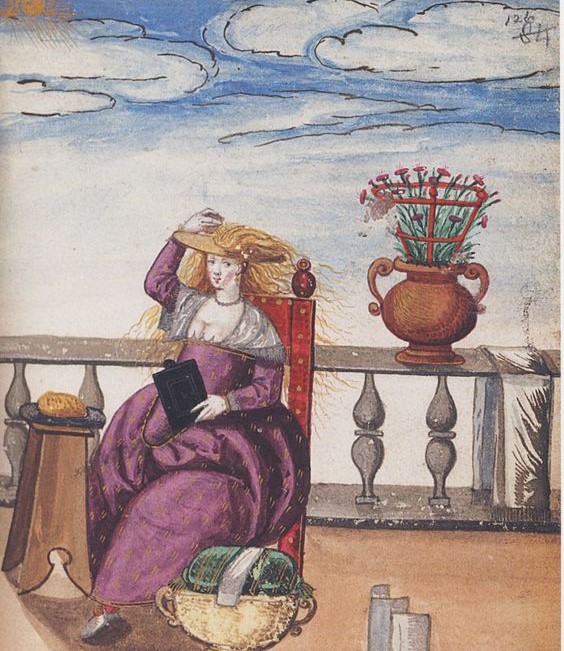
From “Facing Beauty” by Aileen Riberiro, “A Venetian Courtesan Bleaching her Hair”
Red lips and cheeks are two of the beauty ideals that are much more accessible to the weekend Elizabethan that does not require significant hair or colored contact modification. Vermillion (cinnabar or mercury (II) sulfide) was the go to mineral for creating the coral red shade so desired. Lucky for us, the same vermillion shade was also popular in the 1940’s-50’s and is marketed today as a retro color. Be careful of your shades when shopping for red lipstick though, most modern reds are either on the blue-red spectrum or of the lighter pink-red type. You are looking for a true red, or a more orangey red. For a red lip with a sheer coverage, I recommend NYC: City Proof Twistable Intense Lip Color in Roosevelt Island Red, it runs about $3.50 at Walmart. For a full coverage matte lipstick when doing high court paint, my favorite is Matte 8, by Makeup Forever in their Rouge Artist Intense lipstick line found at Sephora. This one is pricey, but it is highly pigmented (you will need to wear it with a moisturizing lip balm), the perfect shade, and lasts forever – as in you and a couple of friends could go in on one tube, split it in little tins, and still probably have enough for the rest of your time in the SCA. An appropriate blush can be easily obtained at the drugstore or supermarket. I prefer powders because they work best for me, but the period choice would be a crème. Look for a blush that is more on the warm/orange/coral side and not they typical pink. I’m very pale naturally with a fairly ruddy complexion in the cheek area so a buildable blush like L’Oréal True Match Blush in N3-4 Innocent Flush, works well for me – your mileage may vary.
The Goodie Bag Ingredients:
Mattress Sachet to keep the insects at bay: lavender, wormwood, mugwort, and meadowsweet.
Washing Ball in a scent profile of a Tudor pomander: marjoram, rose petals, rose oil perfume (rose absolute oil, jojoba oil), clove oil, orris root, orange peel, clove, cinnamon, grape seed oil, castile soap.
Hair Powder by Tortula: Rose petals, clove, nutmeg, watercress, ginger. Can be dusted in hair or mixed with rosewater and sprinkled in. Comb or brush thoroughly through.
Sage Oil for the aches and pains associated with camping: sage leaves, olive oil.
Face Whitening Powder: Zinc Oxide powder to mix as you please with your moisturizer of choice or use as a dusting powder.
A couple of recommended readings if you are further interested, though not an exhaustive list:
“The English Housewife”, Gervase Markham
“How to be a Tudor”, Ruth Goodman
“Elizabethan Make-up 101”, Drea Leed (available at Elizabethancostume.net)
“Renaissance Secrets, Recipes, and Formulas”, Jo Wheeler (published through the V&A)
